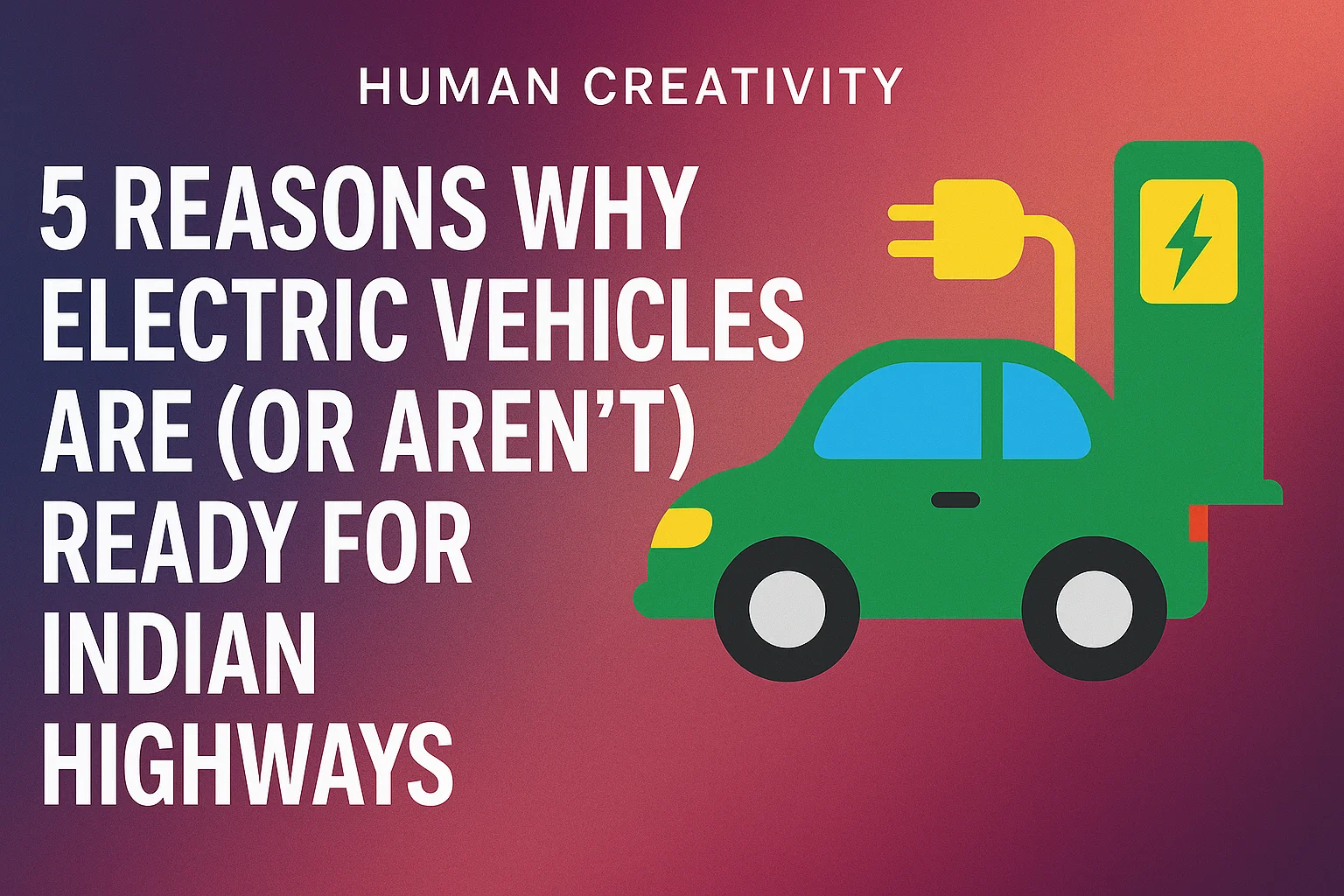The buzz around Electric Vehicles (EVs) in India is louder than ever. With rising fuel prices and a strong government push, more and more electric cars are appearing in our cities. Brands like Tata, MG, and Hyundai have proven that EVs can be excellent daily commuters. But what about the ultimate Indian road test—the highway?
Can an EV truly replace a petrol or diesel car for that long-distance family trip from Delhi to Jaipur, or Mumbai to Pune? The answer isn’t a simple yes or no. In 2025, the reality of EV highway travel is a mix of incredible benefits and practical challenges.
Here are 5 key reasons why EVs might be perfectly ready… or still a few years away from dominating the Indian highway.
1. READY: The Economics are Unbeatable
This is the biggest win for EVs. The running cost is dramatically lower. A typical petrol SUV might give you 15 km/l. With petrol at ₹100/litre, a 500 km trip costs over ₹3,300. An equivalent EV, like a Tata Nexon EV, might consume around 65-70 kWh of electricity for the same journey. Even with fast-charging rates, that cost will likely be under ₹1,300. At home, it’s even cheaper. Over the life of the car, the fuel savings alone are massive. Furthermore, EV maintenance is minimal—no oil changes, no complex engine parts to service.
2. NOT READY: Public Charging Infrastructure is Still a Gamble
This is the number one cause of “range anxiety.” While the network of DC fast chargers on major national highways (like the Delhi-Chandigarh or Mumbai-Goa routes) is growing fast, it’s not yet universal. On less popular state highways or rural routes, fast chargers can be few and far between. You can’t just pull into any “dhaba” and expect a charger. This requires meticulous pre-trip planning, using apps to map out chargers and hoping they are a) working and b) not already occupied by another car.
3. READY: The “Real World” Range is Now Genuinely Usable
The first generation of EVs had a range that was barely adequate for city use. Today, the game has changed. Cars like the MG ZS EV or the Hyundai Kona offer a “real-world” highway range of 350-400 km on a single charge. The Tata Nexon EV Long Range reliably delivers 280-320 km. This means on a 500 km journey, you only need to stop once for a 40-50 minute charging and refreshment break. This is a very practical and usable range for the vast majority of inter-city trips in India.
4. NOT READY: Charging Times are Still Longer than a Refuel
This is a simple matter of patience. With a petrol car, a 5-minute stop gets you another 500 km of range. With an EV, even a fast 50kW DC charger will take about 45-60 minutes to charge your battery from 20% to 80%. While this aligns perfectly with a lunch or coffee break, it’s a problem if you’re in a hurry. If the charger is a slower 25kW unit, you could be waiting for nearly two hours. This “forced” halt changes the mindset of a road trip.
5. READY: The Driving Experience is Superior
This is something you can only understand once you’ve experienced it. An EV on a highway is silent, smooth, and incredibly relaxing to drive. There is zero engine noise or vibration. Overtaking is effortless and instant, thanks to the immediate torque. You arrive at your destination feeling less tired and more refreshed. Features like adaptive cruise control and lane-keep assist, common in many EVs, further reduce driver fatigue on long, open stretches of road.
The Verdict
So, are EVs ready for Indian highways? Yes, if you are a planner. If your primary trips are on popular routes and you are willing to plan one longish break, an EV is not just viable—it’s a superior and cheaper experience. No, if you are spontaneous. If you frequently travel to remote areas or need the flexibility to change your route on a whim, the anxiety of finding a working charger might outweigh the benefits.
